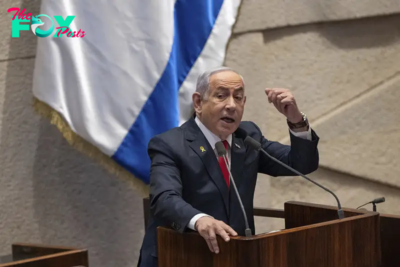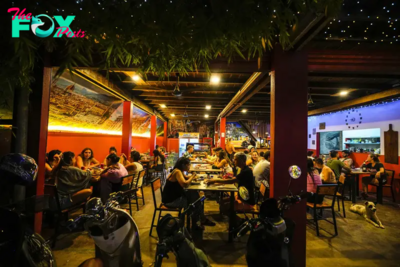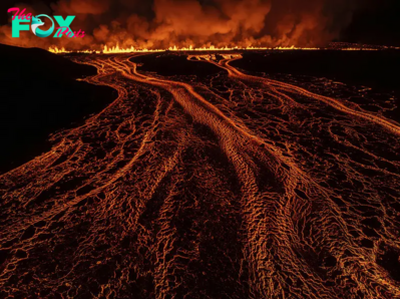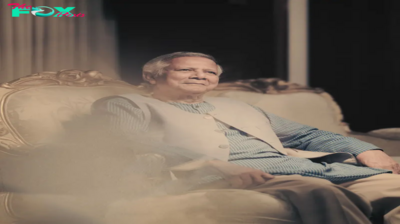World News
Bangladesh on Brink as Anti-Government Protests Become ‘People’s Uprising’
Spiraling clashes between police and anti-government protesters in Bangladesh resulted in at least 90 deaths on Sunday, as initially peaceful student demonstrations morphed into a nationwide campaign of civil disobedience aimed at unseating autocratic Prime Minister Sheikh Hasina.
Read More: Sheikh Hasina and the Future of Democracy in Bangladesh
Despite the government once again cutting mobile internet nationwide, hundreds of thousands of protesters took to the street over the weekend with calls to march on the Ganabhaban, the prime minister’s official residence in the capital Dhaka, on Monday afternoon. In response, police set up roadblocks at major arteries into the city, but students say thousands have already slipped past the security cordon in order to join the demonstrations. “The time has come for the final protest,” said Asif Mahmud, a protest leader, per AFP.
Hasina has so far been characteristically defiant. Speaking following a meeting with security chiefs, she said demonstrators were “not students but terrorists who are out to destabilize the nation.” Still, such is the scale and breadth of public anger that analysts doubt whether her ruling Awami League party—which was returned for a fourth straight term in January elections boycotted by the opposition and denounced by observers as neither free nor fair—could possibly stay in power.
“Survival of the government is highly unlikely,” says Ali Riaz, a Bangladeshi-American political scientist and professor at Illinois State University. “I don’t think that people will go back without seeing a transition.”
It’s chaos largely of Hasina’s own making after the Awami League-aligned students’ group, the thuggish Chhatra League, was dispatched to confront initially peaceful demonstrations that began last month against civil service employment quotas for descendants of the nation’s 1971 war of independence. Following a brutal crackdown by security forces, which have officially led to over 280 deaths to date though diplomatic sources tell TIME could in truth number over 1,000, the government imposed a nationwide curfew and all internet services were severed across South Asia’s second biggest economy of over 170 million people.
Read More: How Mass Protests Challenge Bangladesh’s Past—and Threaten to Rewrite Its Future
After order was briefly restored, police arrested thousands of students and opposition activists. But the resumption of internet connectivity resulted in a deluge of cellphone footage of beatings and killings being uploaded to social media, galvanizing protesters to escalate their demands by urging for a complete shutdown of all factories and public transport and for people to refuse to pay taxes or utility bills. In addition, they called on the 10 million or so of their compatriots based overseas to halt remittances worth an estimated $2 billion annually.
Outrage was particularly stoked by UNICEF reports that at least 32 children had been killed during the demonstrations, many shot inside their homes by security forces and Awami League-aligned militias allegedly firing indiscriminately at windows. Bangladeshi society has become largely inured to shadowy disappearances, with almost 2,500 extrajudicial killings reported between 2009-2022, but the brazen slaughter of civilians in broad daylight against a backdrop of economic doldrums and widespread alleged corruption has proven impossible to ignore. Sheikh Hasina’s blundering response to the bloodshed didn’t help after she was filmed crying over damage to a train station while deriding fallen students as “traitors” and “terrorists.”
On Sunday, the U.N.’s human rights chief, Volker Türk, called for an end to the “shocking violence” and urged the government to “cease targeting those participating peacefully in the protest movement, immediately release those arbitrarily detained, restore full internet access, and create conditions for meaningful dialogue.”
Yet unrest continues across the country, with thousands protesting in the southern city of Cox’s Bazar, while 13 police officers were killed when a mob attacked a police station in the district of Sirajganj north of Dhaka. A defining feature of the current tumult is the broad swath of society now on the streets, most tellingly a sizable female contingent in what remains a largely conservative and patriarchal Muslim society. Young people spray paint slogans denouncing Hasina or brandish placards calling her a “killer,” while statues of her once-revered father, independence hero Sheikh Mujibur Rahman, have been vandalized.
Read More: 5 Takeaways from TIME’s Interview with Bangladesh Prime Minister Sheikh Hasina
“Sheikh Hasina ruled by fear and that was the core element keeping her whole edifice of power intact,” says Mubashar Hasan, a Bangladeshi scholar at the University of Oslo in Norway. “But it has now come to a point where people have said, ‘Enough is enough.’ It’s not a protest anymore; it’s a people’s uprising.”
Whether Hasina can ride out the storm may depend on if Bangladesh’s Military feels compelled to intervene. On Sunday, army chief General Waker-uz-Zaman said the armed forces “always stood by the people,” while his iNFLuential predecessor, General Ikbal Karim Bhuiyan, denounced “egregious killings” and called on Hasina to withdraw troops from the streets. While early reports blamed security forces including police and the feared Border Guard Force for deaths, multiple reports of more recent clashes suggest soldiers firing on Awami League-aligned militias in defense of protesters.
“For the Military, an important factor is how India and the international community, including the U.N., will react,” says Riaz. “It would rather wait until it becomes the only option to the political forces and the public at large.”
The sheer scale of unrest means that, regardless of what happens next, Bangladesh faces an almighty reckoning. All 167 universities across the country have been shuttered indefinitely and faculty worry how anti-government protesters can once again mix harmoniously with their iNFLuential Chhatra League peers. But parallel schisms exist across society as the Awami League’s politicization of the police, courts, and practically every government institution have entrenched deep distrust of all organs of state. Even journalists for state-aligned media have been attacked by protesters enraged by the perceived bias of their reporting.
“Moving forward there needs to be a serious reconciliation process,” says Hasan. “Otherwise this country will fall into an abyss.”
-

 World News9h ago
World News9h agoWorld’s Best Brands – Brazil
-

 World News1d ago
World News1d agoWorld’s Best Brands – India
-

 World News1d ago
World News1d agoInternational Criminal Court Issues Arrest Warrants for Netanyahu and Hamas Commander
-

 World News1d ago
World News1d agoLandmark Bill to Ban Children From Social Media Introduced in Australia’s Parliament
-

 World News1d ago
World News1d agoAmerican and Australian Tourists Die in Laos After Drinking Tainted Alcohol
-

 World News2d ago
World News2d agoSee Photos of the Seventh Volcanic Eruption on Iceland’s Reykjanes Peninsula in 12 Months
-

 World News2d ago
World News2d agoMuhammad Yunus on the Race to Build Bangladesh 2.0
-

 World News2d ago
World News2d agoU.S. Charges Indian Billionaire Gautam Adani With Defrauding Investors
















